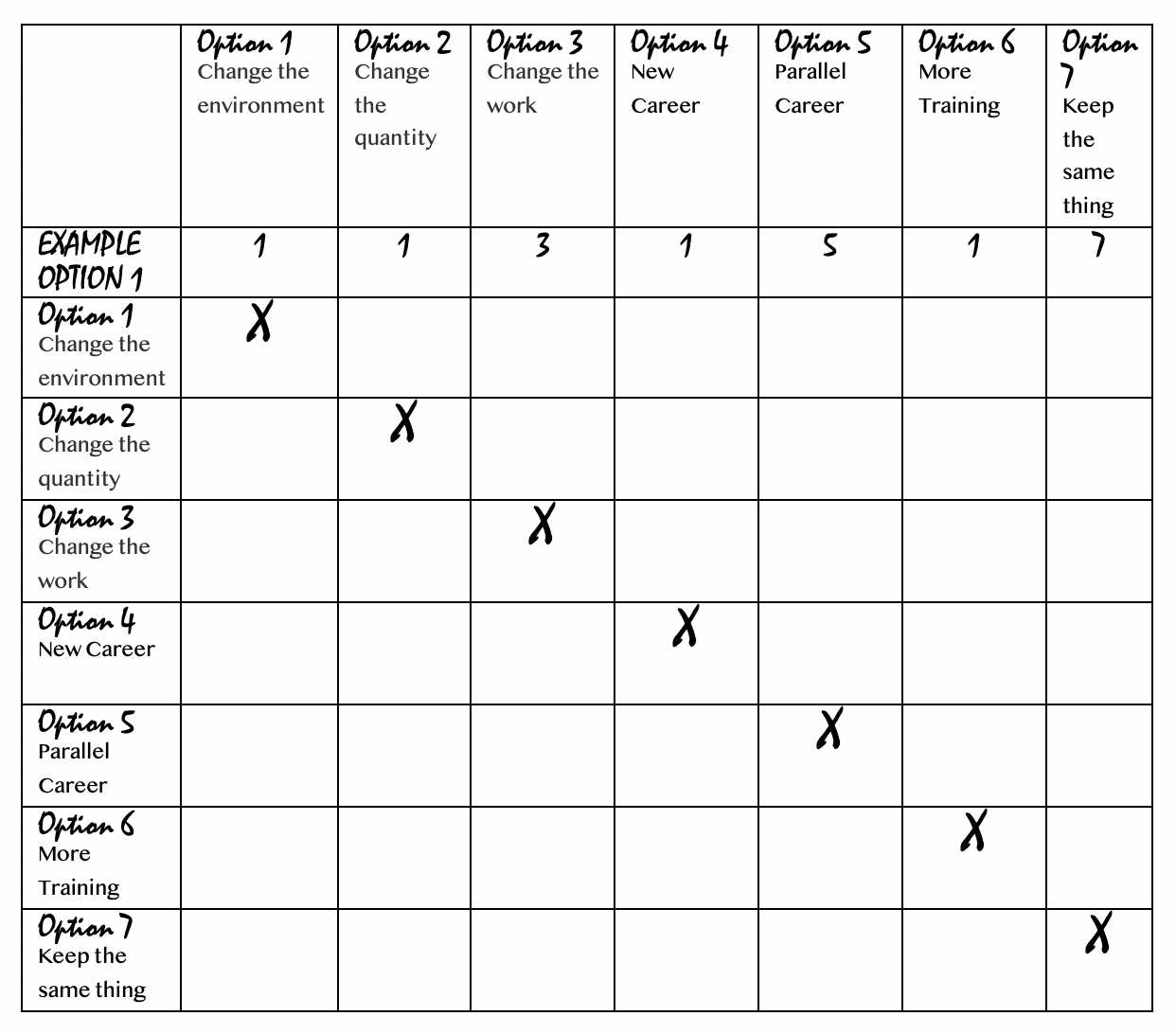The 5 Phases of Vocational Discernment: Taking Steps Towards a Major Life Transition
/While we are used to making choices every day, we may find ourselves paralyzed or change resistant on the whole with a major life transition. The cluster of decisions involved in decision-making can cause a sense of emotional flooding or overload. As a response, we can utilize these Ignatian principles as an over-arching guide and invitation to our inner world by accepting that they are needed and allow us to enter in. However, we must live into an active posture externally for change to take place.
How does one live into Vocation Discernment and Decision-making?
The steps to discernment are similar to decision-making and follow a similar pattern, but uniquely flow from one to the next in correlation to the attitudes of discernment. Vocational discernment includes decision-making but only as one element of it. The 5 phases of vocational discernment include: Awareness of the need for change, information gathering, reflection, decision-making, and action.
1. Awareness of the Need for Change – a crisis may have necessitated the change; or you may be entering in preventatively (our awareness came much sooner than the ability to do anything about it because we needed more information)…when cross-cultural workers experience a shift or one thing changes, usually there is a ripple effect where everything changes. This awareness can become quite disruptive!
2. The Information Gathering Phase – What are my options? What are the factors in this decision? For global workers this is one of the most complex phases and where we find ourselves working with individuals and couples. We recognize that unique to those in a foreign context and especially those in ministry jobs, answering these questions will have ripple effects on every area of life. If one is disgruntled with a boss or a co-worker, shifting organizations is not a simple solution. This one answer may act as a spark that sets off a forest fire. Having confidential, outside input at this phase is incredibly beneficial.
3. Reflection – In tandem with the previous phase we experience a deeper examination of the information gathered matched with self-awareness and a listening to the Holy Spirit. Questions like, “What do I like? What do I need? What are my dreams for the future? What are my limitations? Where have I let self-limiting beliefs hold me back?” When vocational formation and spiritual formation meet, there is an opportunity for a creative, likely messy and always beautiful expression of one’s unique self to arise. This is where we often meet with people in The Art of Transition or Life Planning process.
4. Decision-Making – after accepting the need for change, gathering information and taking a concerted time for reflection, comes the decision. This is usually the shortest period of time as the prior investment pays off! If the previous steps are taken, this one comes with clarity and often a deep sense of relief! We encourage careful thought as to who will take part in the final decision. We’ve often used the phrase, “He/she has a voice, but not a vote.” Clearly there is more to discuss around who’s voice has a vote in your transition.
5. Action - Implementing the decision is the final step. We call this the roll-out. The action steps need to be carefully thought through including who needs to know what and when. In order to avoid relational fallout, considering those who will be most effected by your decision and how they might respond is key. In addition to the timing of a roll-out, it is important to think through the narrative of what you share and with whom.
One final point of clarification. Discernment is open to all who seek it. While some may have the strengths and skills of listening; or have had experience working with career development, the spiritual gift of discernment, I believe is a gift from the Lord. Ask for it in this unique time! Ask for it for others listening to God on your behalf. Ask for the postures we discussed above: 1.) openness 2.) courage 3.) generosity 4.) interior freedom 5.) habit of prayerful reflection 6.) having one’s priorities straight 7.) not confusing the ends with the means. Remember, these are not instinctive, but rather are cultivated through direct relationship with the Lord and are fruit that is accessible from our leaning into that relationship.
Some may feel as I did, that seeking other’s in times of discernment points to a lacking in your own life. On the contrary, it is a unique opportunity to utilize the greater body of believers. You can possess both the gift of discernment and listen to wise council at the same time. This is counter-cultural work that will likely hold value tension for many. Accepting the feedback of trusted voices is wise, enhances one’s ability to hear and make the necessary next steps as the unity and peace come.
Find a group of trusted, caring, and confidential people who get this and can listen on your behalf to the life that God is inviting you into and trust that He has your ultimate best interest in this process!
For reflection:
Think back to a time when you included trusted voices in your decisions, what was different about that decision compared to others?
When did you wish you would have listened to others, but didn’t?
What are some unhealthy attachments that keep you from entering into the attitudes of discernment?





















